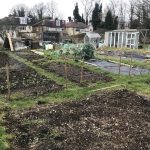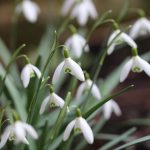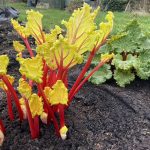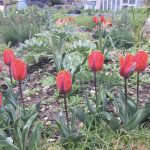Throughout my life, people have described, without fail, sunny spells in September as an Indian summer. At what point do we decide that actually, it’s simply still UK summer? It may be the end of the season, blurring into autumn, but our climate is changed and with it, our seasons. I love this time of year, with the lower sun and it’s warm, spectacular sunsets of orange, scarlet and pink. As the leaves start turning on some trees toward the end of the month, the colour palette around us is more varied and smushed than any other time of year.
Plant some late season flowers
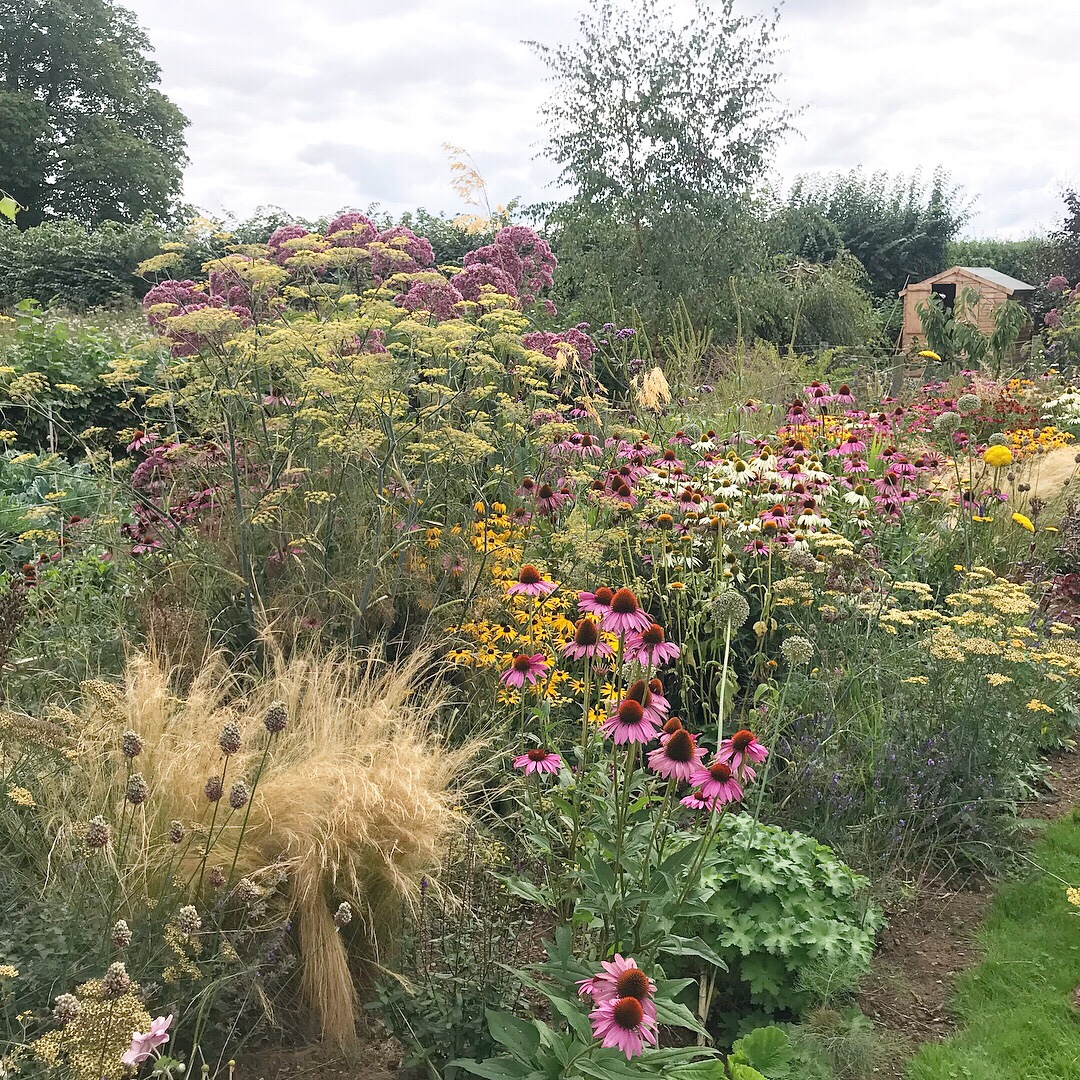
I always find it surprising when some gardens look finished at this time of year when it’s easy to stretch the growing season out with the right choice of plants. Now is a great time to visit other gardens for inspiration, take a look at what’s in flower now and make a note. September has ideal warm and wet conditions for planting new plants, or you can wait to add them in spring (or grow from seed!)
Some late season plants include:
- Ornamental grasses: most will be in their prime in September to October including Miscanthus, Pennisetum, Calamagrostis, Stipa, Jarava and many more!
- Aster
- Clematis viticella and other late-flowering species
- Cosmos (annual)
- Dahlia
- Echinacea
- Helianthus (sunflowers)
- Hydrangea
- Hylotelephium
- Persicaria
- Rudbeckia
- Veronicastrum
Start planting bulbs
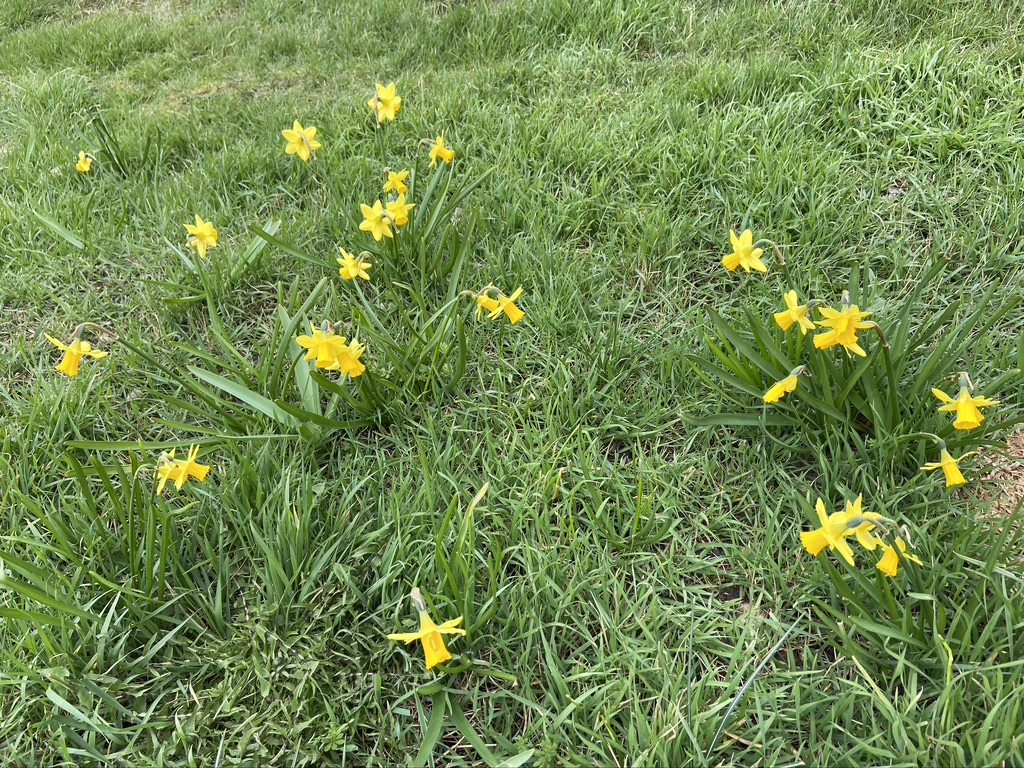
This is the month to plant bulbs for a succession of colour, advice says it can be sensible to wait until November to plant tulips to avoid fungal diseases like tulip fire – but I question the overall thinking of this practice below.
A selection of spring bulbs to plant now by the month in which they’ll flower:
- January / February:
- Snow drops – There are many species and hundreds of cultivars to choose from. Personally I only ever bother with Galanthus nivalis because it has a good ‘slim leaf’ to bright flower ratio, which looks good on mass.
- Cyclamen coum – actually best planted as a plant, but you can buy them as corms to plant now dry. They come in white, pink and all shades in between.
- March / April:
- Daffodils – Narcissus come in all shapes and sizes, as well as different shades of yellow, even pure white. I personally love ‘Thalia’, ‘Jonquilla Pueblo’, ‘Tete a Tete’, Narcissus cyclamineus, Narcissus bulbocodium ‘White Petticoat’.
- Crocus – best planted in a sheltered area because wind and rain can cause them to flop.
- Tulips – I personally only plant tulips that are guaranteed to flower perennially, except in pots. This is to avoid introducing problems into the garden, like the soil borne virus tulip fire, and to save time, effort and improve sustainability. Reducing the amount of transportation each year. Always check if the tulips you are planting will flower and multiply every year. The reason I’m skeptical about the idea of planting tulips in November to avoid tulip fire is because once in your soil, it’s always there! Any idea you can then prevent it by planting bulbs later seems silly to me – the number one measure is to avoid introducing it in the first place.
- May / early-June:
- Alliums – most alliums will flower between May and early June depending on the variety. Look out for some cultivars that flower later in summer. I like ‘Globemaster’, ‘Mount Everest’ and A. christophii among others. I always grow chives as much for their flowers as for their flavour.
- Fritillaries – Fritillaria meleagris is one our most beautiful wild flowers grown from a corm, it will be very happy in any damp sunny place. F. imperialis is the giant fritillary with orange, red or yellow flowers and a foxy musty scent. F. persica has the most beautiful dusky black-purple flowers but I have never been successful growing these in a planting area because the flowers are always eaten by lily beetle or something else.
- July
- Allium sphaerocephalon.
Harvesting and storing
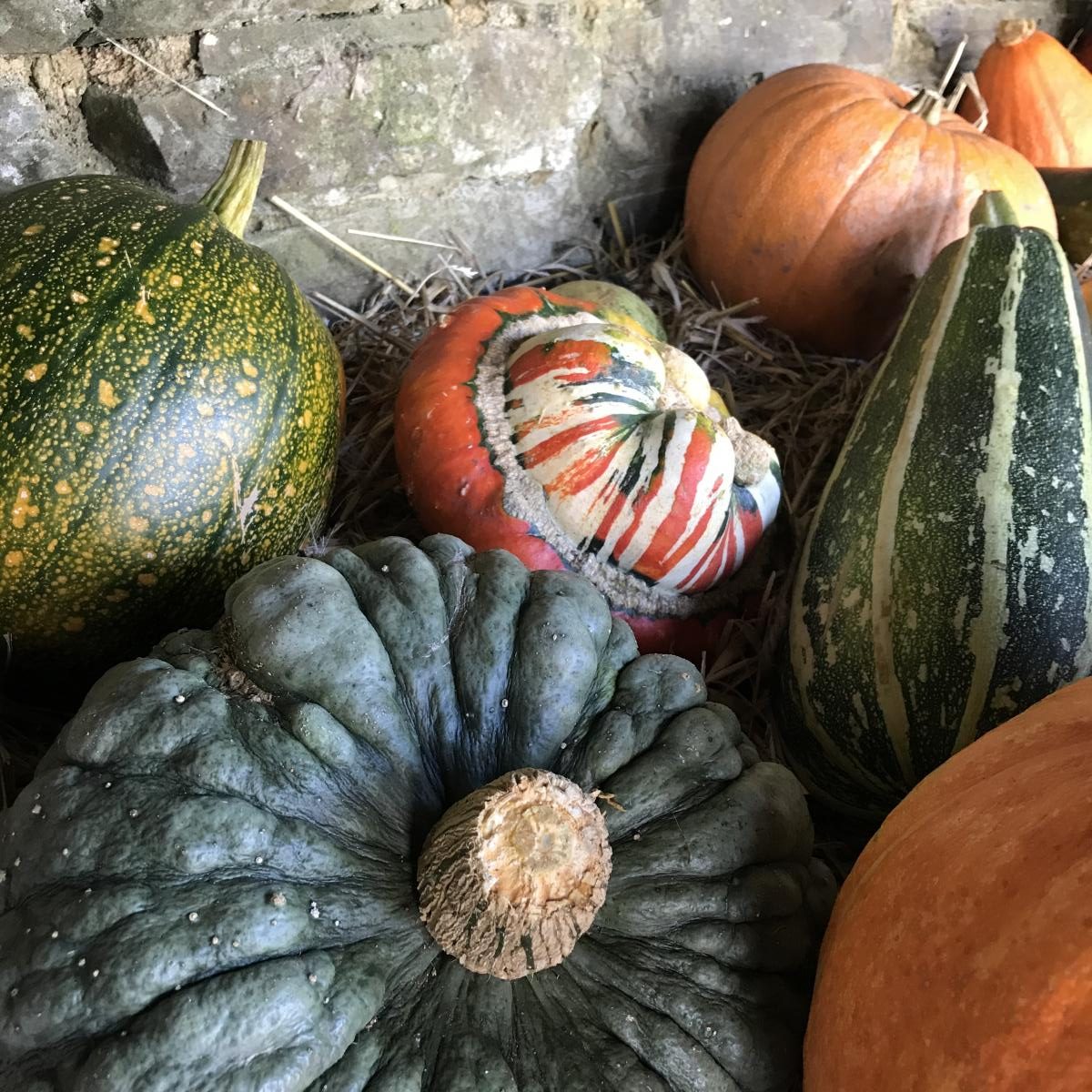
- Potatoes: dig out and store somewhere dry and dark to prevent them going green. Do this before the frosts arrive, which can be anytime from this month – later the further south you are.
- Apples: store in the same conditions, dark, cool and dry.
- Onions: are best stored somewhere lighter but also cool and dry.
- Raspberries: keep picking autumn raspberries and eat them fresh. Alternatively, freeze them or use in jam.
- Squash and pumpkins: when as ripe as you can expect outdoors, cut them off with some stem and then place in a sunny spot indoors for a week or so. This allows the skin and stem to dry and toughen for winter storage.
Sow vegetables this month
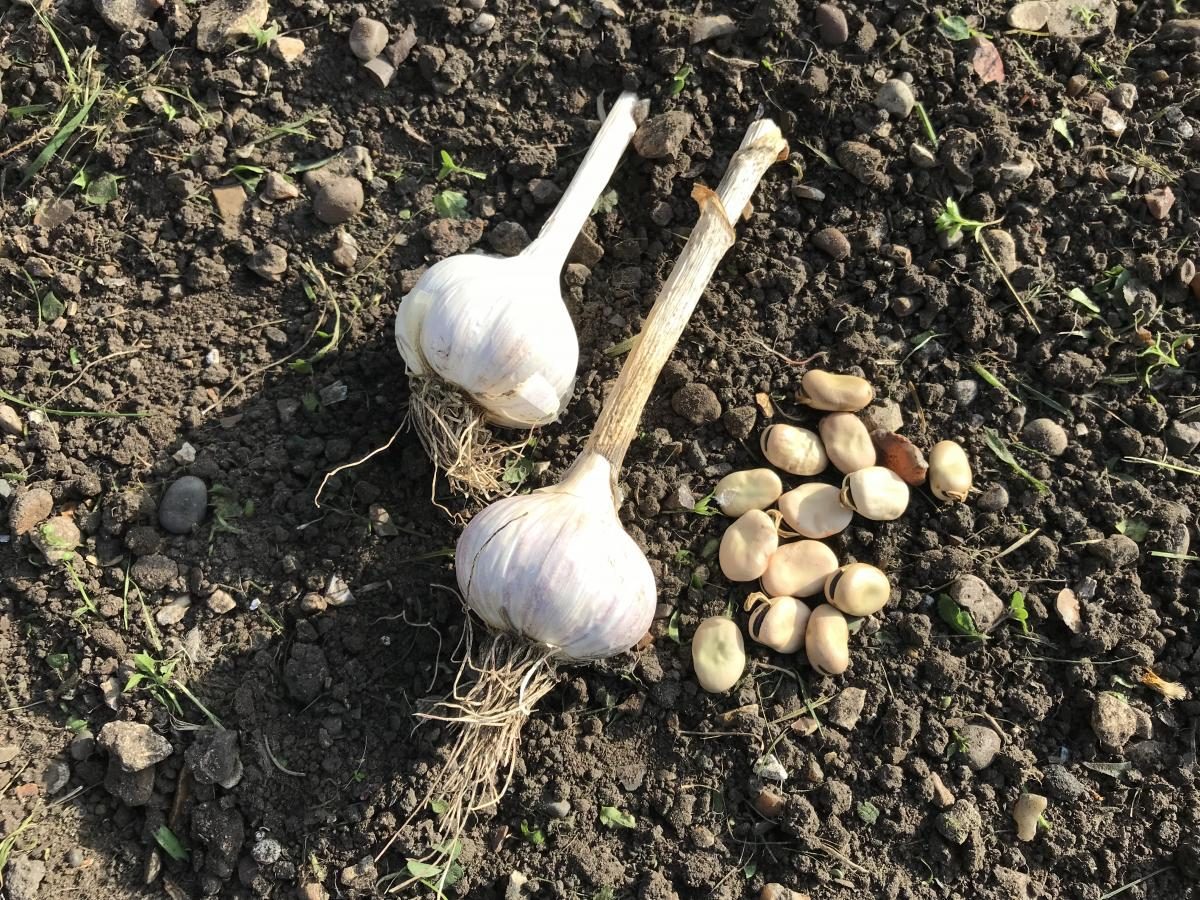
- Seeds of hardy salad leaves to go into polytunnels, greenhouses or protected outside with fleece or cloches.
- Overwintering peas and broadbeans. For broadbeans, it depends on how far north you are and how exposed your plot. Sow at the end of September if you are further north, and later into October or even early November if you are in southern areas.
- Garlic can be planted out from the end of this month.
Hedges
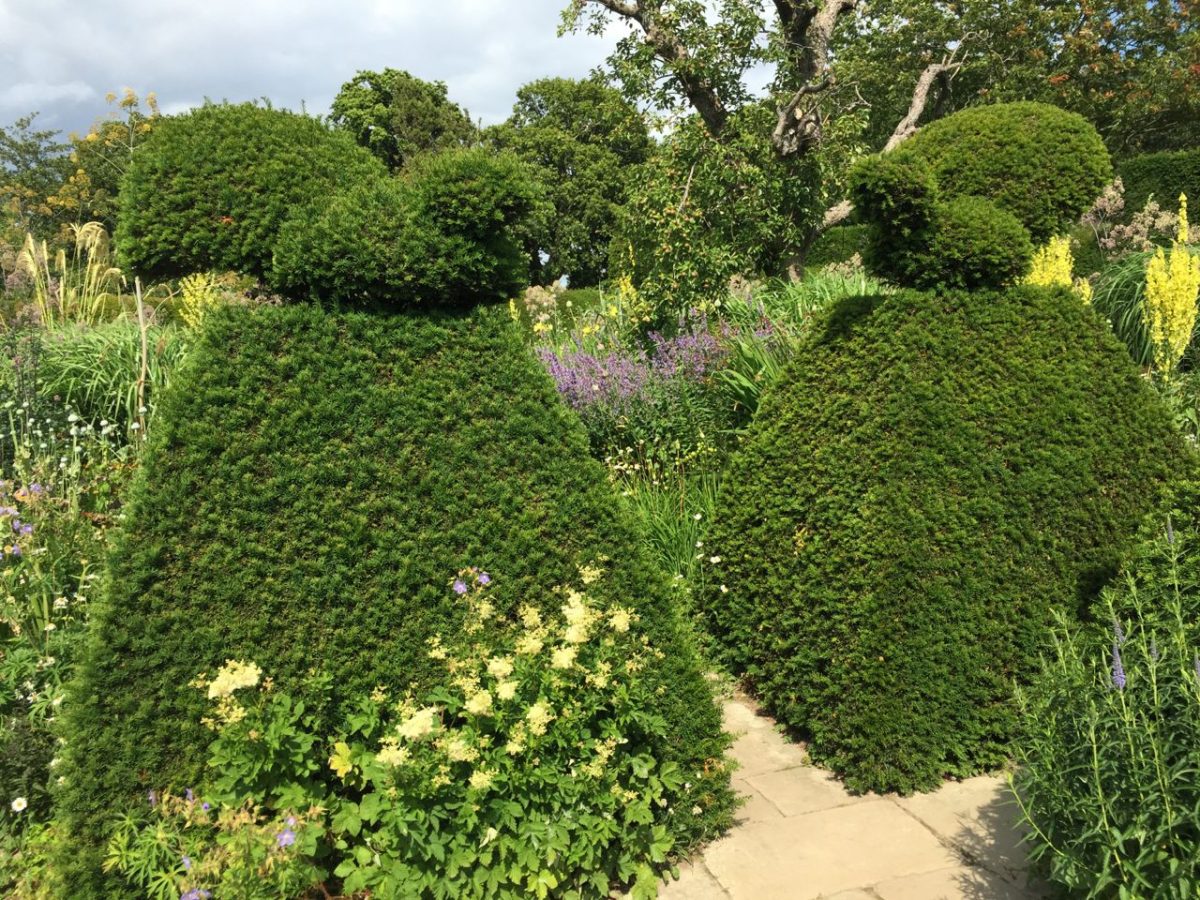
With bird season over, it’s now a good time to cut back hedges to keep them in shape. Remember the golden rule to keep the sides slightly sloping to allow light to reach the lower half better.
